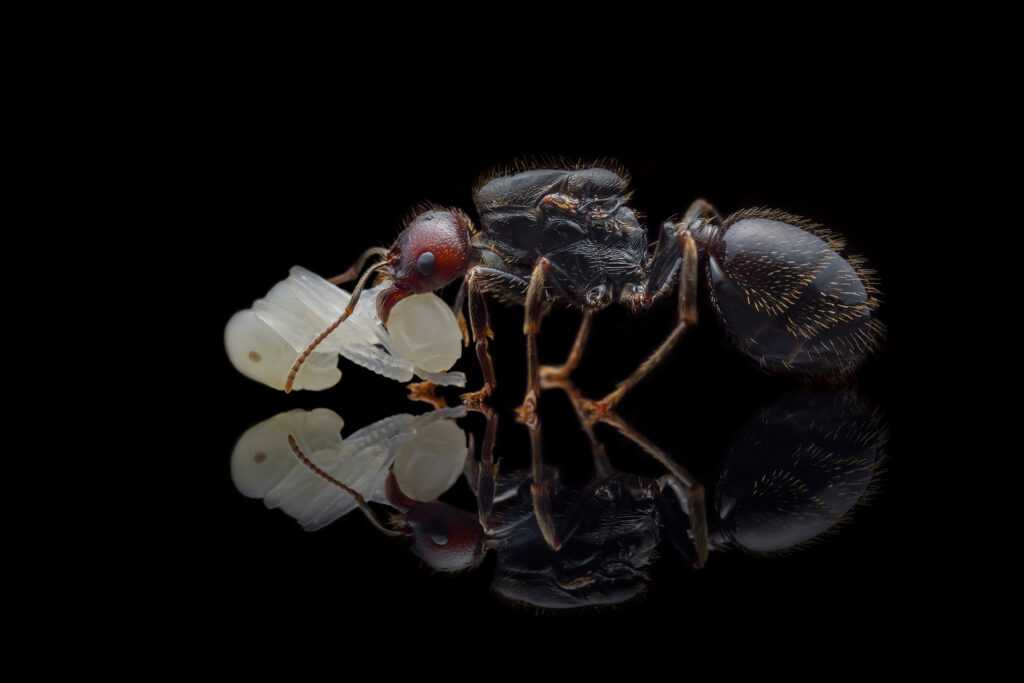Polyrhachis bihamata: The Fascinating and Efficient Ant Colony
Welcome to the amazing world of Polyrhachis bihamata, a captivating ant species that thrives on efficiency and cooperation. Known for its monogynous colony type and fast development speed, this ant species is a true wonder of nature. In this comprehensive description, we will explore the size, color, nutrition, preferred habitats, and other fascinating features of Polyrhachis bihamata.
Size and Color
The size of Polyrhachis bihamata varies among its castes. The queen, the largest member of the colony, measures between 14-17mm, while the workers range from 12-14mm. These ants are easily recognizable by their vibrant orange color, adding a touch of beauty to any ant farm or observation setup.
Nutrition
When it comes to nutrition, Polyrhachis bihamata has a diverse palate. Their diet primarily consists of food insects such as cockroaches and crickets. To provide a well-balanced diet, it is also recommended to supplement their meals with syrup made of water and honey at a ratio of 4:1. Additionally, they enjoy fruits, vegetables, jelly, and cooked chicken without salt, helping them maintain a healthy and robust colony.
Habitat Requirements
Creating an ideal habitat for Polyrhachis bihamata is crucial for their well-being and optimal development. These ants thrive in a humid environment, with nest humidity levels ranging from 70-90%. For the arena, a humidity level of 50-70% is recommended. To ensure their comfort, the temperature in the arena should be maintained between 26-30 °C, while the nest temperature should fall within the range of 22-30 °C.
Distinctive Features and Behavior
Polyrhachis bihamata is distinguished by its cautious and secretive nature. When faced with potential danger, these ants display a remarkable ability to withdraw from the threat instead of panicking. This characteristic adds to their charm as captivating creatures to observe and study.
Recommended Nesting Options
For those interested in breeding Polyrhachis bihamata, it is important to provide them with suitable nesting options to support their colony’s growth and development. Here are a few recommended choices:
– **Acrylic Nest:** An acrylic nest provides a transparent view of the ant’s daily activities, making it an excellent option for observation and educational purposes.
– **Cork Nest:** A natural and eco-friendly option, a cork nest provides insulation and a secure place for the ants to establish their nest.
– **Plaster Nest:** A plaster nest allows for easy moldability and customization, providing the flexibility to create a nest structure tailored to the colony’s needs.
– **Aerated Concrete Nest:** Known for its excellent moisture retention capabilities, an aerated concrete nest ensures the humidity levels required by Polyrhachis bihamata are maintained.
By choosing one of these nesting options, you can provide an environment that mimics their natural habitat, allowing them to thrive and develop their colony to its full potential. If you’re interested in exploring more ant species, check out our ants category.
In Conclusion
Polyrhachis bihamata is more than just your average ant species. With their unique characteristics, efficient colony structure, and fascinating behavior, they offer a captivating glimpse into the world of ants. By understanding their size, color, nutrition, habitat requirements, and suitable nesting options, you can create a rewarding environment that supports the growth and development of these remarkable creatures. Whether you are an ant enthusiast, an educator, or simply curious about the wonders of nature, Polyrhachis bihamata is a remarkable addition to any collection or observation setup.





















Reviews
There are no reviews yet.